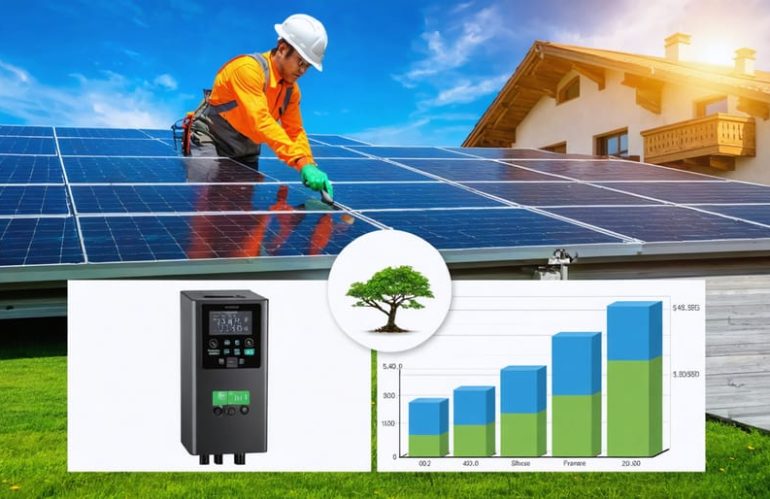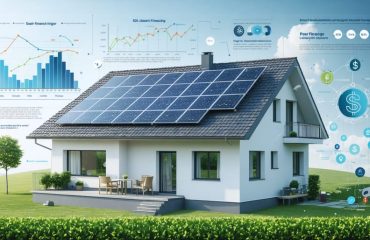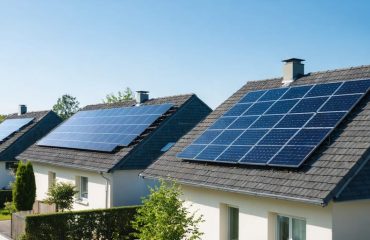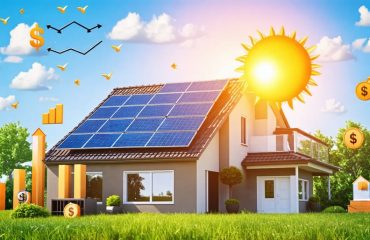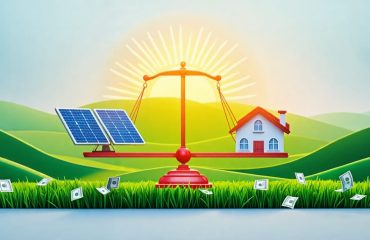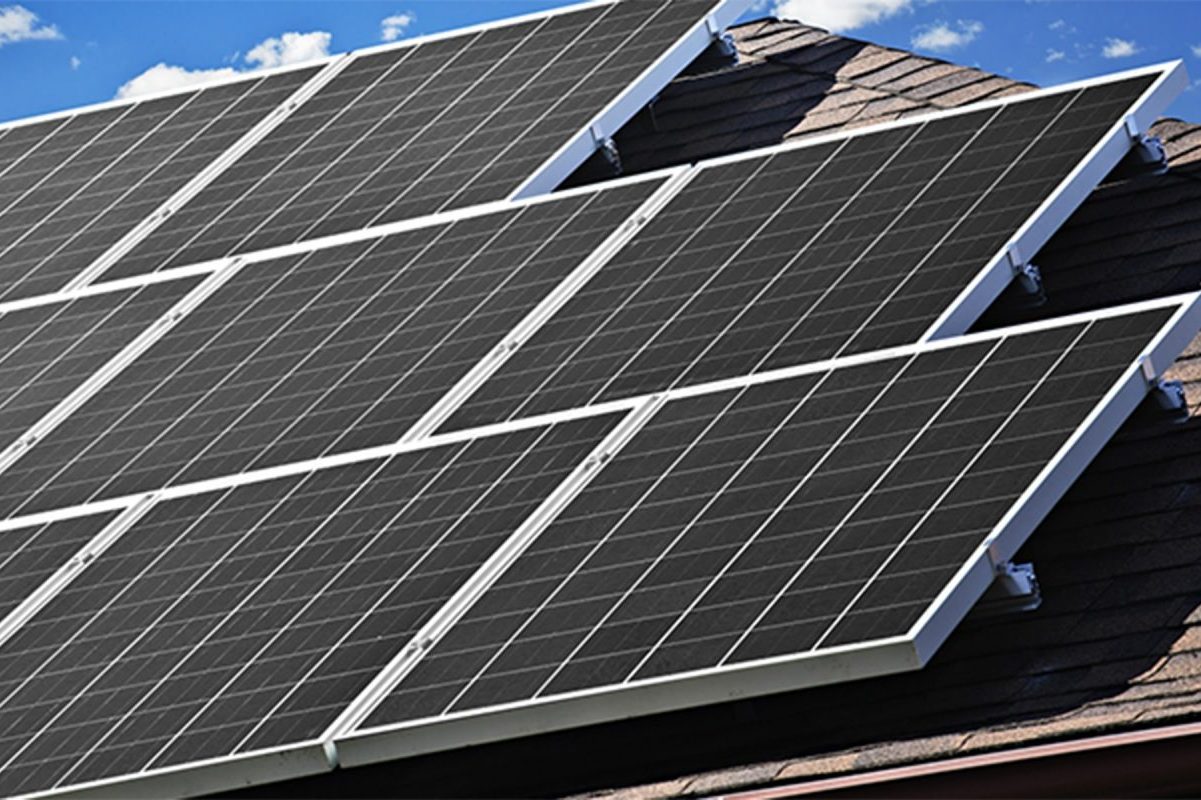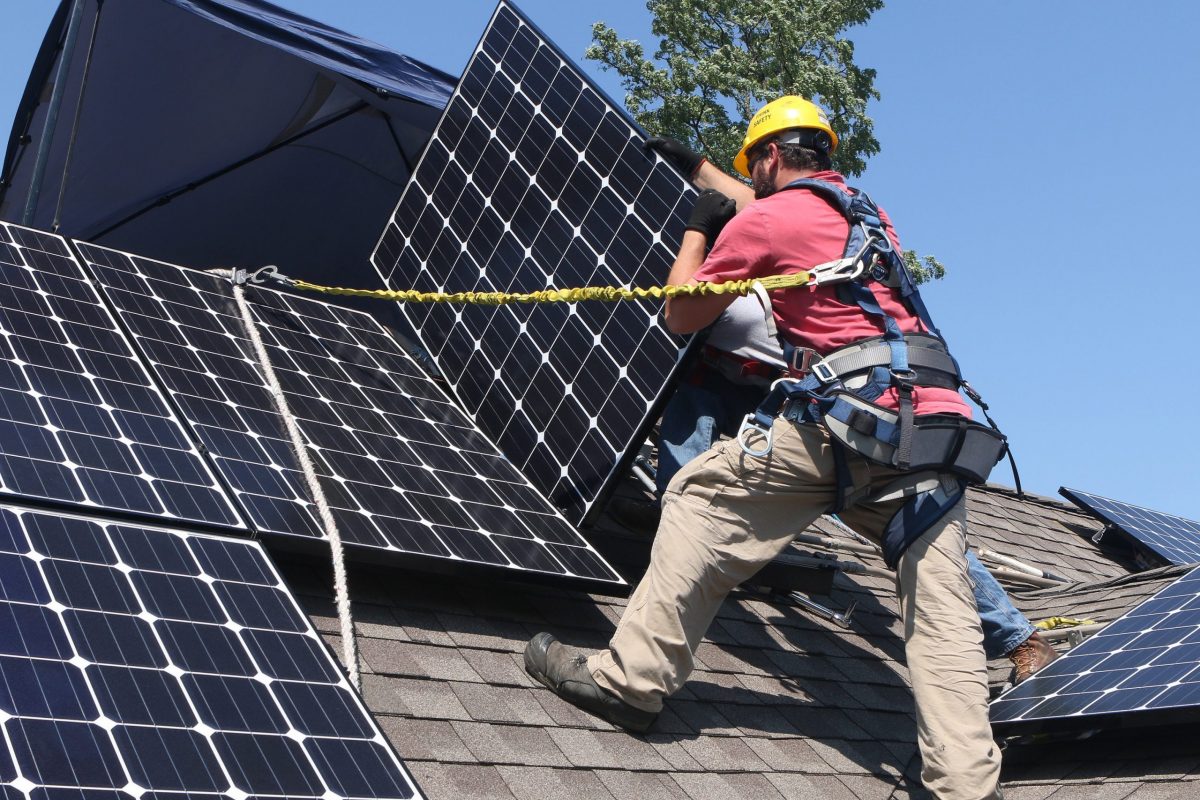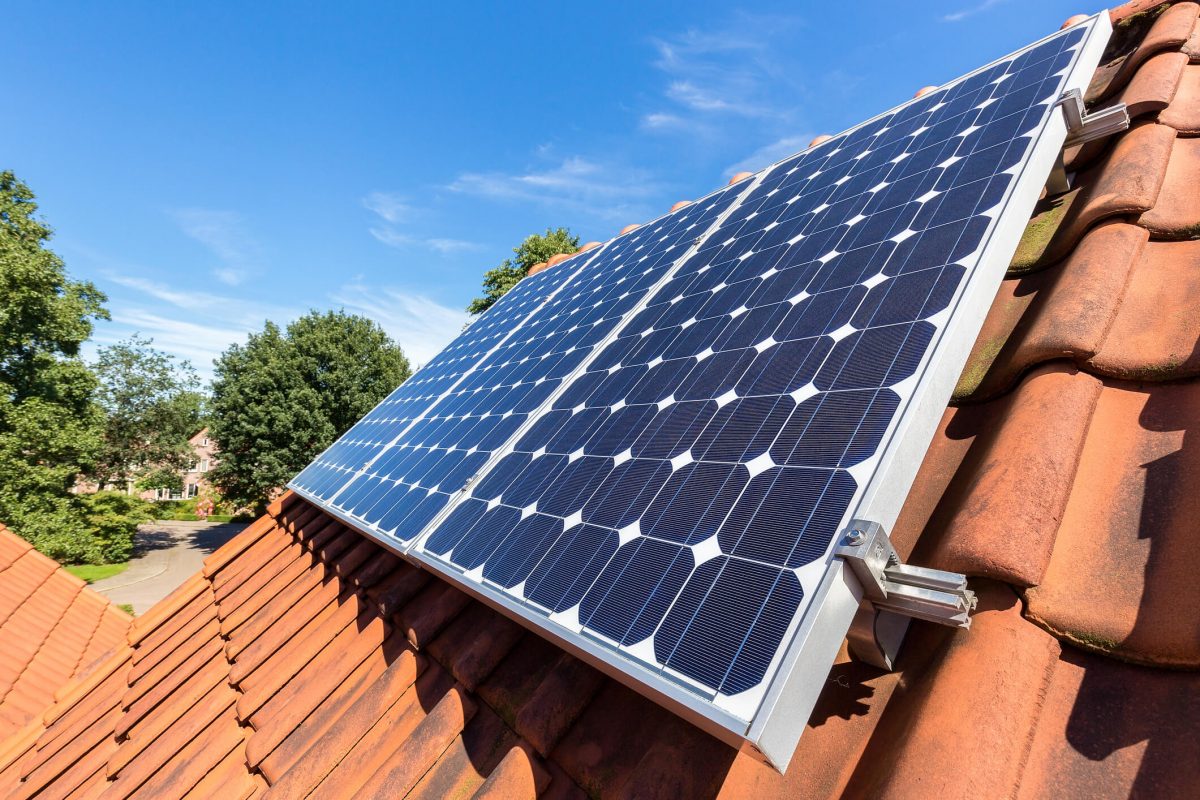Operating and maintaining solar panels costs significantly less than most homeowners expect – typically just 1-2% of the total solar panel installation price annually. While the upfront investment commands attention, ongoing maintenance expenses remain remarkably predictable and manageable over a system’s 25+ year lifespan.
Modern solar installations require minimal upkeep, with most maintenance costs stemming from occasional professional cleanings, inverter replacement after 10-15 years, and routine system monitoring. For an average 6kW residential system, homeowners can expect to spend $150-300 per year on maintenance – a modest investment that helps ensure optimal energy production and system longevity.
Understanding these ongoing costs is crucial for making an informed decision about solar power. When factored into the total cost of ownership, maintenance expenses represent a small fraction of the substantial energy savings and environmental benefits that solar provides over decades of reliable service.
Routine Maintenance Expenses
Panel Cleaning Costs
Keeping your solar panels clean is essential for optimal performance, and you have two main options: professional cleaning or DIY maintenance. Professional cleaning services typically cost between $150 and $330 per visit, with prices varying based on system size and roof accessibility. Most homeowners schedule professional cleanings 1-2 times per year, making the annual cost range from $300 to $660.
For the DIY approach, you’ll need basic equipment like a soft brush, mild soap, and a water hose, which costs around $30-50 initially. While this method is more cost-effective, it’s important to follow proper safety procedures and use appropriate cleaning techniques to avoid damaging your panels.
Many homeowners opt for a hybrid approach: doing light cleanings themselves throughout the year and scheduling one professional cleaning annually. This balanced strategy typically costs about $200-300 per year, including cleaning supplies and one professional service. Remember that regular cleaning can improve panel efficiency by 5-10%, often making the cleaning costs worthwhile through increased energy production.
Rain can help with natural cleaning, but in areas with high pollution, pollen, or dust, more frequent cleaning may be necessary to maintain optimal performance.
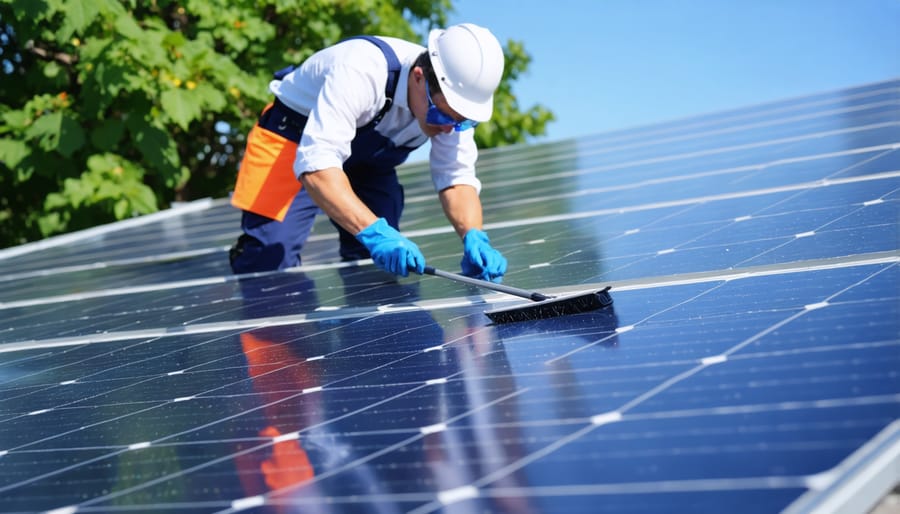
Annual Inspection Fees
Annual inspections by certified solar professionals typically cost between $150 and $300, depending on your system size and location. These comprehensive check-ups are essential for maintaining your solar PV system’s optimal performance and usually include a thorough examination of all major components.
During an inspection, professionals will check your panels for physical damage, verify proper electrical connections, test inverter performance, and ensure your monitoring system works correctly. They’ll also clean any areas that need attention and verify that mounting hardware remains secure.
Many solar companies offer maintenance packages that include annual inspections at a discounted rate. These packages often combine inspection services with regular cleaning and monitoring, providing better value for homeowners. While some might view this as an extra expense, regular professional inspections can actually save money by preventing costly repairs and maintaining system efficiency.
Consider scheduling your annual inspection during spring or fall when weather conditions are mild and before extreme seasonal changes that might affect your system’s performance. Some insurance policies and warranties may also require professional inspections to maintain coverage, making this investment even more worthwhile.
Common Repair Costs
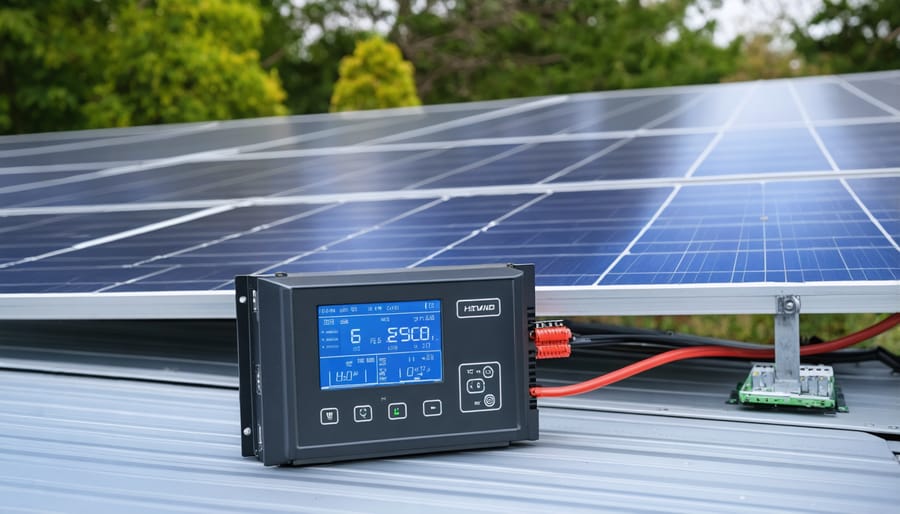
Inverter Maintenance
The inverter is a crucial component of your solar PV system, acting as the heart that converts DC power from your panels into usable AC electricity for your home. While inverters are generally reliable, they typically need replacement every 10-15 years, making them the most significant maintenance expense in your solar system’s lifetime.
A standard string inverter replacement can cost between $1,000 and $2,500, including installation. If you have microinverters (one for each panel), individual replacements might cost $150-$350 per unit. While this may seem substantial, remember that most inverters come with 10-year warranties, protecting you from unexpected early replacement costs.
Regular inverter maintenance is relatively simple and affordable. Annual professional inspections cost around $150-$200 and help ensure optimal performance. Watch for warning signs like decreased energy production or error messages on your monitoring system. Some inverter issues can be resolved through simple fixes or software updates, costing minimal or nothing.
To maximize inverter lifespan, ensure proper ventilation around the unit and keep it clean from dust and debris. Consider setting aside about $100 annually in a maintenance fund to prepare for eventual replacement costs.
Wiring and Connection Issues
Electrical maintenance and wiring repairs typically account for 5-10% of annual solar PV maintenance costs. Common issues include loose connections, damaged wiring insulation, and corroded terminals, which can range from $150-300 per repair visit. Professional electricians usually charge between $75-125 per hour for solar-related electrical work.
Regular inspection of wiring connections can help prevent costly repairs. Homeowners should budget approximately $200-400 annually for potential wiring maintenance, though many systems may go several years without requiring any electrical repairs. Warning signs of wiring issues include fluctuating power output, system shutdown, or error messages on your inverter display.
Most wiring repairs are covered under warranty during the first 10 years, significantly reducing out-of-pocket expenses. However, damage from weather events or wildlife might require additional costs. Installing protective measures like critter guards ($100-200) can prevent rodent damage to wiring, potentially saving hundreds in repair costs.
For optimal performance and safety, it’s recommended to have a certified solar technician perform annual wiring inspections, typically costing $150-200. This preventive maintenance can identify potential issues before they become major problems, ultimately saving money in the long run.
Cost-Saving Maintenance Tips
DIY Maintenance Guide
Regular DIY maintenance can significantly extend your solar system’s lifespan while keeping costs down. Start with monthly visual inspections from the ground – look for debris, dirt buildup, or obvious damage. Using a garden hose in the early morning or evening, gently spray panels to remove dust and bird droppings. Avoid using harsh chemicals or abrasive materials that could scratch the panels.
Monitor your system’s performance through your inverter display or monitoring app to catch potential issues early. Keep nearby trees trimmed to prevent shading and clear fallen leaves or branches from panels. During winter, use a soft snow rake with an extended handle to carefully remove snow accumulation.
Always prioritize safety – avoid climbing on your roof or working with electrical components. If you notice cracked panels, loose connections, or significant performance drops, contact a professional. While DIY maintenance can save money, some tasks require expert attention to maintain warranty coverage and ensure system safety.
Document all maintenance activities and keep records of your system’s performance to track any changes over time. This information can be valuable for professional technicians if issues arise.
Warranty Benefits
To maximize your warranty coverage and minimize long-term costs, it’s essential to understand and properly maintain your solar PV documentation. Most quality solar panels come with two key warranty types: a performance warranty (typically 25-30 years) and an equipment warranty (usually 10-15 years). To protect your solar panel return on investment, keep your warranty documents in a safe place and register your products immediately after installation.
Regular maintenance inspections aligned with warranty requirements can prevent costly repairs and maintain coverage validity. Take photos of your system upon installation and during routine checks to document its condition. Many warranties require professional maintenance, so partner with certified technicians for annual inspections. Read the fine print carefully – some warranties may become void if you install third-party components or attempt DIY repairs.
Keep detailed maintenance records and communication with your installer or manufacturer. This documentation can be crucial when filing warranty claims. Most importantly, understand what activities might void your warranty and avoid them to ensure continuous protection throughout your system’s lifetime.
Long-Term Cost Analysis
When evaluating long-term solar ownership costs, the financial benefits become increasingly apparent over time. While the initial maintenance costs might seem concerning, they’re typically offset by substantial energy savings within the first few years of installation.
A typical homeowner can expect to save between $10,000 and $30,000 on electricity bills over a 20-year period, depending on local energy rates and system size. These savings significantly outweigh the maintenance costs, which usually amount to just $300-$500 annually for routine inspections and cleaning.
Consider this breakdown: If your monthly energy bill averages $150, you could save around $1,800 annually with solar panels. Over two decades, that’s $36,000 in potential savings. Even when factoring in maintenance costs of roughly $8,000 over the same period, you’re still looking at net savings of approximately $28,000.
The financial picture becomes even more favorable when considering that many solar components are becoming more durable and efficient. Modern solar panels typically maintain 85% or more of their original efficiency after 25 years, meaning your energy production – and savings – remain relatively stable over time.
Additionally, as utility rates continue to rise (historically by about 2.2% annually), your savings actually increase year after year. The fixed nature of solar maintenance costs, combined with escalating energy prices, means the financial benefits of your solar investment compound over time, making it an increasingly valuable asset for your home.
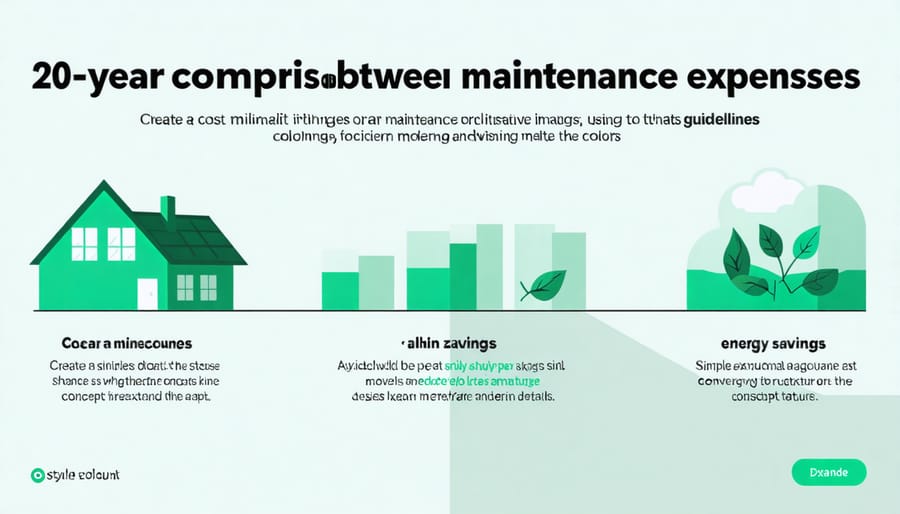
Maintaining a solar PV system is more straightforward and cost-effective than many homeowners initially assume. With typical annual maintenance costs ranging between $150 and $300, solar panels represent one of the most reliable and low-maintenance renewable energy investments available today. The combination of minimal upkeep requirements, decreasing installation costs, and substantial energy savings makes solar PV systems an increasingly attractive option for environmentally conscious homeowners.
Regular maintenance not only ensures optimal system performance but also protects your investment for decades to come. While professional inspections and occasional cleaning are recommended, many maintenance tasks can be performed by homeowners themselves, further reducing long-term costs. When you consider that properly maintained solar panels can last 25-30 years while maintaining 80% or more of their original efficiency, the value proposition becomes clear.
Remember that the initial investment in quality components and professional installation often leads to lower maintenance costs throughout the system’s lifetime. With potential energy savings of $10,000 to $30,000 over your system’s lifetime, the modest maintenance expenses represent a small fraction of the overall financial benefits of going solar.

